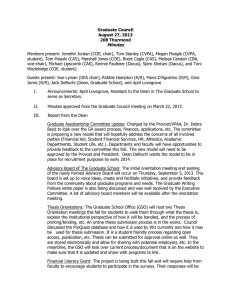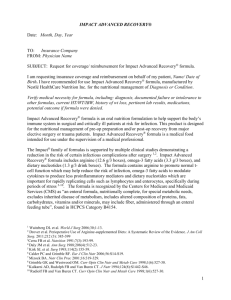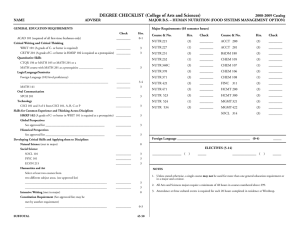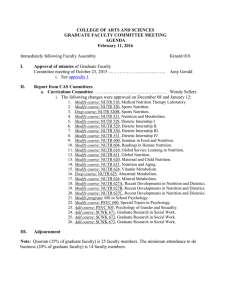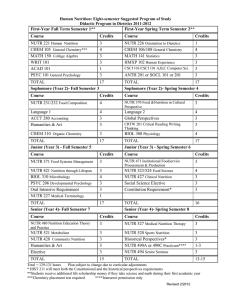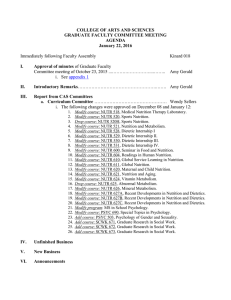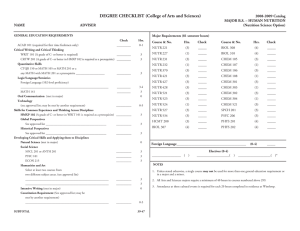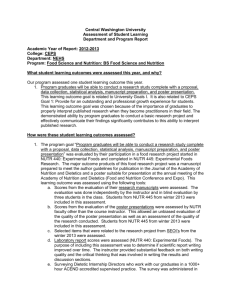Central Washington University
advertisement
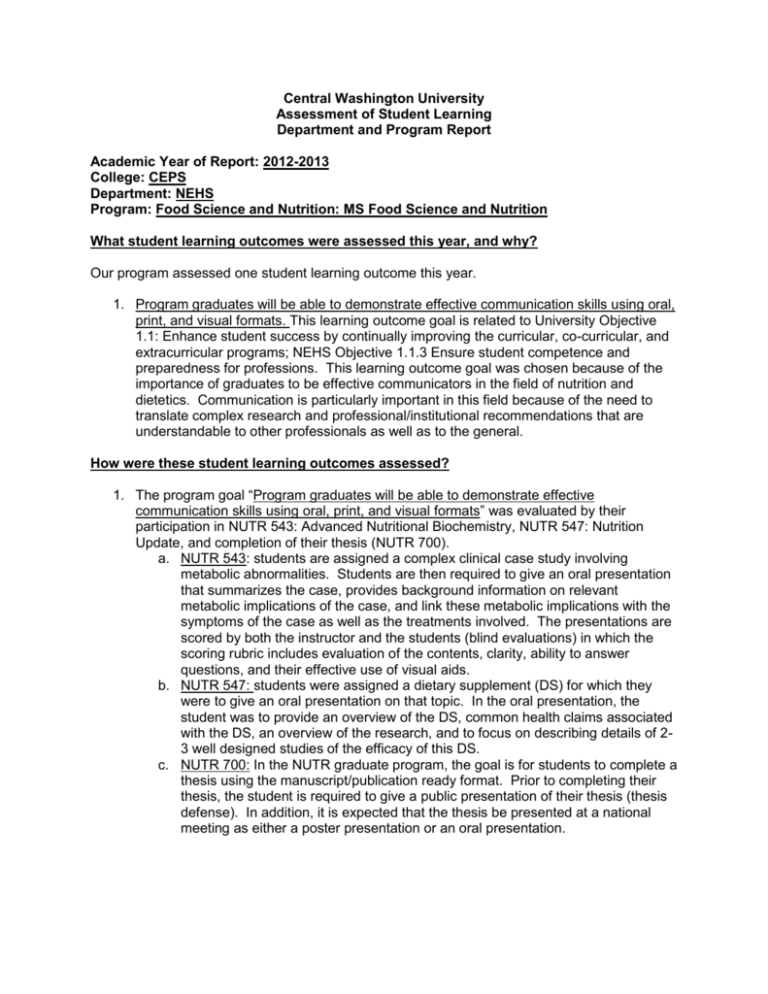
Central Washington University Assessment of Student Learning Department and Program Report Academic Year of Report: 2012-2013 College: CEPS Department: NEHS Program: Food Science and Nutrition: MS Food Science and Nutrition What student learning outcomes were assessed this year, and why? Our program assessed one student learning outcome this year. 1. Program graduates will be able to demonstrate effective communication skills using oral, print, and visual formats. This learning outcome goal is related to University Objective 1.1: Enhance student success by continually improving the curricular, co-curricular, and extracurricular programs; NEHS Objective 1.1.3 Ensure student competence and preparedness for professions. This learning outcome goal was chosen because of the importance of graduates to be effective communicators in the field of nutrition and dietetics. Communication is particularly important in this field because of the need to translate complex research and professional/institutional recommendations that are understandable to other professionals as well as to the general. How were these student learning outcomes assessed? 1. The program goal “Program graduates will be able to demonstrate effective communication skills using oral, print, and visual formats” was evaluated by their participation in NUTR 543: Advanced Nutritional Biochemistry, NUTR 547: Nutrition Update, and completion of their thesis (NUTR 700). a. NUTR 543: students are assigned a complex clinical case study involving metabolic abnormalities. Students are then required to give an oral presentation that summarizes the case, provides background information on relevant metabolic implications of the case, and link these metabolic implications with the symptoms of the case as well as the treatments involved. The presentations are scored by both the instructor and the students (blind evaluations) in which the scoring rubric includes evaluation of the contents, clarity, ability to answer questions, and their effective use of visual aids. b. NUTR 547: students were assigned a dietary supplement (DS) for which they were to give an oral presentation on that topic. In the oral presentation, the student was to provide an overview of the DS, common health claims associated with the DS, an overview of the research, and to focus on describing details of 23 well designed studies of the efficacy of this DS. c. NUTR 700: In the NUTR graduate program, the goal is for students to complete a thesis using the manuscript/publication ready format. Prior to completing their thesis, the student is required to give a public presentation of their thesis (thesis defense). In addition, it is expected that the thesis be presented at a national meeting as either a poster presentation or an oral presentation. What was learned? 1. Program graduates will be able to demonstrate effective communication skills using oral, print, and visual formats. a. NUTR 543: Evaluation of the clinical case study presentation by their peers averaged 95% and by the instructor averaged 94%. The lowest score evaluated by peers and instructor were 91% and 88%, respectively. These scores would indicate that the presentations were near professional in quality. b. NUTR 547: Evaluation of the oral presentation on dietary supplements averaged 97% by their peers and 92% by the instructor. The lowest score as evaluated by peers and instructor were 94% and 85%, respectively. These scores would indicate that the presentations were near professional in quality. c. NUTR 700: Since 2010, we have had eight students complete their MS degree in Nutrition. Of the eight, six students have had parts or all of their research presented (or scheduled to be presented) at national meetings. In addition, three of these graduate students theses have been published in peer-reviewed journal, one is currently in review, and three have been submitted but rejected. Although we are happy that the number of published works have increased and that the percentage of national presentations remain high, we hope to see that publication rate increase further. What will the program do as a result of this information? 1. Program graduates will be able to demonstrate effective communication skills using oral, print, and visual formats. In addition to the reports stated above, we have received numerous informal comments from employers of our graduates that our students have excellent presentation skills. This is a result of not only those activities described above, but the teaching opportunity that most of our graduate students have as graduate assistants. We hope to be able to improve on the percentage of accepted publications by pushing graduate students to complete drafts of their thesis manuscripts earlier in order for more faculty to have more of an opportunity to help with the editing of that manuscript.

